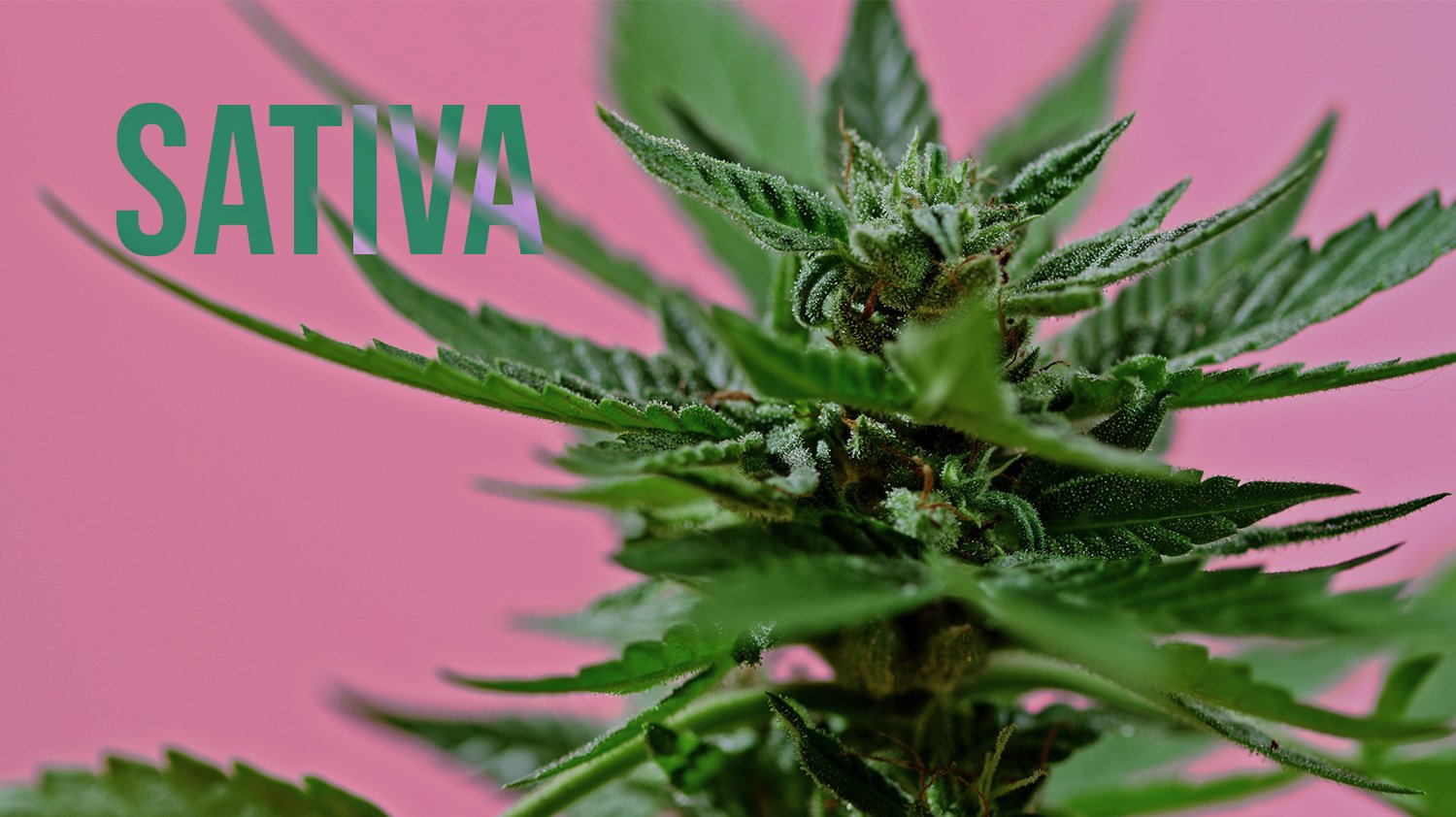A Guide to Sativa Strains From the Experts in Cannabis
When it comes to choosing the best product for you, you’ll come across a lot of sativa strains. But what exactly is sativa and how will it affect you? Our Sativa Guide helps you understand the various strains, so you can decide if sativa is the right fit for you.
What is Sativa?
Sativa is a term used to describe a group of cannabis strains with certain characteristics. Sativa strains have developed a reputation for producing a stimulating high that helps get your creative juices flowing. Because of this, sativa strains are often recommended for daytime use.
But while sativa plants have a reputation for this specific type of high, it isn’t always so. Having the classification of sativa doesn’t mean that a specific strain induces the characteristic effects. When it comes to understanding how a strain might affect you, a much more accurate approach is to look at the chemical components of the plant.
So what exactly does the term sativa mean? Sativa largely refers to the physical structure of certain cannabis plants. Sativa plants are tall and thin and have elongated leaves. They also tend to produce a light bud yield and have long growth cycles.
While the term sativa doesn’t universally describe the effects of every sativa strain, certain characteristics tend to be present in sativa plants, such as high levels of tetrahydrocannabinol (THC) and low levels of cannabidiol (CBD). Although, again, this isn’t the case for every sativa strain.
History of Marijuana Taxonomy
Since before and after legalization, your local "plug" and dispensary have been offering menus of these well-known marijuana types (sativa, indica and hybrids), which have reputations of certain characteristics.
The term sativa was coined in 1753 by scientist Carl Linnaeus. His job wasn't to smoke the compounds and document their effects, but simply to classify living things. He was the first to document cannabis. This field of study is called taxonomy. An interesting definition of this field from Plant Systematics: A Phylogenetic Approach Taxonomy is "the practice of making groups of organisms into species and arranging those species into larger groups and assigning names to the groups, to produce a classification." The key phrase is "assigning names." In the 1700s, over 250 years ago, there was no way for Linnaeus to know any of the active compounds that actually impact the mental and physical effects when someone smokes cannabis, most notably being the cannabinoids and terpenes.
With that said, if the job of a taxonomist was simply to document the physical characteristics of a living organism and give it a name, should we still only purchase sativa cannabis for "daytime" use, simply based on its classification? The team at Claybourne believes you can't; it's quite impossible. Growth characteristics do not determine the effect. Even though cannabis has been around since the 1600s, and was known for its medicinal properties, we are just beginning to emerge from a modern cannabis prohibition. Breeding practices, monitoring of genetics, and regulation have prevented real transparency.
The cannabis that has been smoked in the US for the past century has been smuggled from multiple countries, with no clarity on the lineages. A grower had no real knowledge of the plant's true origin and with no standards of breeding, plants were crossed at will, practically modifying all naturally occurring marijuana. In today's US-produced cannabis market essentially everything is considered a hybrid and scientists would even agree. At this point, this is how consumers know of marijuana, and even our menus still have indica and sativa categories. But, we label not only the THC percentage but cannabinoid and terpene profiles of our strains, which are the real determining factors of a good daytime bud.
Shopping For Sativa Characteristics
Now that we are out of the modern cannabis prohibition era with 18 states legalized for recreational purposes and more importantly 39 states legalized for medical use research, we have access to more scientific information.
In a 2016 interview with Dr. Ethan Russo, he calls the commonly applied distinction of sativa/indica for their psychoactive effects total nonsense. "The degree of interbreeding/hybridization is such that only a biochemical assay tells a potential consumer or scientist what is really in the plant. It is essential that future commerce allows complete and accurate cannabinoid and terpenoid profiles to be available."
Rather than correlating growth patterns to effect, it makes more sense to correlate the biochemical components, as Dr. Russo would say, or the chemical compounds. Cannabinoids and terpenes affect how cannabis makes you feel. So stop shopping for daytime or nighttime strains; instead, read and ask questions about the chemical makeup of the cannabis and try strains that closely relate to how you want to feel. Monitor the effects after consumption, and try different combinations until you find strains that produce the effects you're looking for.
This stuff can seem intimidating, but it's easy to wrap your head around after you learn some simple definitions.
Sativa Compounds
When looking at sativa strains, it’s important to look at the chemical makeup of each plant to decide which one is best for you. Every cannabis plant contains different active chemical compounds in different amounts. These compounds are what create the experience of cannabis — from the high to the health benefits. The following are compounds that you’re likely to find in sativa strains.
Tetrahydrocannabinol in sativa
THC is a key active compound typically seen in sativa strains. This compound is most well-known for its ability to induce a high. Higher levels of THC in a strain result in stronger psychoactive effects. But THC has also been found to contain some impressive health benefits. Potential therapeutic benefits that you could experience from Sativa strains high in THC include:
a better night’s sleep (1)
reduced pain levels (2)
less nausea (3)
an improved appetite (4)
protection from cancer cell development (5)
Cannabidiol in sativa
CBD tends to be present in lower levels in sativa strains, but that can vary. If your sativa strain contains CBD, then you might expect to experience some of its health benefits. Research tells us that CBD may:
reduce anxiety (1)
treat skin conditions (2)
act as an anti-inflammatory (3)
improve sleep (4)
reduce seizure frequency (5)
Terpenes in sativa
Terpenes are another compound that you want to look at when figuring out what your Sativa strain is going to feel like. Terpenes not only influence the scent of a cannabis, they can also contribute to its effects. Terpenes that you’re likely to find in Sativa strains include:
Linalool: This citrus-scented compound has been found to help reduce inflammation and anxiety and support healthy digestion and heart function (6, 7, 8, 9).
Humulene: Humulene creates a hoppy smell and has strong anti-inflammatory activity (10). It may also reduce cancer cell growth (11).
Pinene: Responsible for the distinctive smell of pine, this terpene may alleviate asthma symptoms and reduce inflammation (12, 13).
Sativa’s Side Effects
One side effect that tends to be talked about with cannabis is that of a “body high”. A body high refers to an intense feeling of relaxation that can leave you less active. This side effect can be desirable or unwanted, depending on your needs. Whether sativa will give you a body high depends on your specific response. Every person is different, but if you’re really worried, you can always start with a small dose at first to gauge how you might respond.
Because sativa is high in THC, other possible side effects can include:
increased heart rate
dry mouth
red eyes
reduced reaction and coordination skills
memory loss
anxiety (14)
How to Tell Sativa From Indica Plants?
The other main cannabis strain that you’ve probably heard of is indica. But how does a sativa differ from an indica? The main way to tell the difference between the two kinds of cannabis plants is to look at the plant itself. Sativa and indica have several differences:
Leaves: Sativa leaves are long and thin, while Indica leaves are more characteristic of cannabis—broad and short.
Plant height: Sativa plants are tall and thin, while Indica stays short and bushy.
Plant growth: Sativa plants take quite a while to grow while Indica plants shoot up fast.
Bud size: Sativa plants produce a small number of buds compared to Indica plants.
Or at least that's the way the experts used to tell the difference between sativa and indica.
Modern genetic testing has found that the real difference between the two main kinds of cannabis plants is whether they are fibrous, like hemp, or non-fibrous, like the kinds of cannabis used for drug purposes. A doctoral student at Indiana University named Karl Hillig found that the genes for making THC mostly show up in non-fiber plants and the genes for making CBD mostly show up in hemp plants. (15)
In other words, we all had the names right and the effects backwards for 200 years. Hillig says all the drug plants are really indica, and all the fiber plants are really sativa.
But you don't really care, do you? You want a pot product that is going to do what you need it to do when you need it. Your budtender can help you find the cannabis effect you are looking for. When you shop online for cannabis delivery from Claybourne, we disclose the THC, CBD and terpene makeup of everything in our shop. This means you don't have to worry about which cannabis is which. Choose the strain you want, not the general indica or sativa species of the plant.
Sativa Strains From Claybourne Co
Durban Poison
Grown in Claybourne’s indoor facilities, the Durban Poison pure Sativa originated from Durban, South African. It boasts a sweet smell and produces an energetic, uplifting effect, perfect for a productive day or when you’re in a creative mood. Shop Durban Poison El Bluntitos.
Strawberry C.R.E.A.M
Clayboune’s first Gold Cuts Sativa, Strawberry C.R.E.A.M., which stands for “Claybourne rules everything around me”, has a flavor that evokes fresh strawberries. Get your creative juices flowing with Strawberry C.R.E.A.M. (THC 25.5%).
Chem Dawg
Mysterious in origin, ambiguous in genetics and inspiring a plethora of cross-strains, Chem Dawg is one of our most potent Sativas. Cannabis newbies take note; with a 33.69% THC content, expect a cerebral experience coupled with a strong, heavy-bodied feeling. Shop Chem Dawg.
Professor Chaos
This Claybourne Sativa has a sour, spicy aroma. It can produce a clear-headed effect, perfect for people who want the THC (28%) effects without sacrificing productivity. Shop Professor Chaos eighths.
Lemon Margy
With strong notes of pine and lemon, the amazing aroma of Lemon Margy also provides a great high thanks to its Sativa strain. Shop Lemon Margy Pre-rolls.
Sativa-dominant Hybrid Strains From Claybourne Co
Cereal Milk
Sugary sweet with flavors of citrus and berries, this Sativa hybrid will remind you of your favorite sugary cereal. The Sativa–Indica blend relaxes the mind and enhances creativity and focus.
Orange Cookies
This Sativa-dominant hybrid smells like tangy citrus and tastes like sweet orange cookies. Orange Cookies produces an uplifting high and stimulates creative thinking. This is combined with a euphoric and content feeling.
Paradise Cookies
These conical and tightly packed buds are frosted with trichomes. Paradise Cookies emits an earthy aroma (think a nutty, musky, piney aroma) with berry undertones. Users report feelings of calm and relaxation after consuming Paradise Cookies.
Animal Face
This rare Sativa-dominant marijuana strain is made by crossing Face Off OG and Animal Mints. Expect a piney, gassy terpene plus cookie flavoring to produce a potent high. It produces a blissful, full mind and body high.
Chem Driver
This Sativa-dominant hybrid has a grassy nose and taste that produces a cerebral high. It’s perfect if you’re looking to boost creativity.
This article is for informational and educational purposes only, and should not be substituted for professional medical advice.

